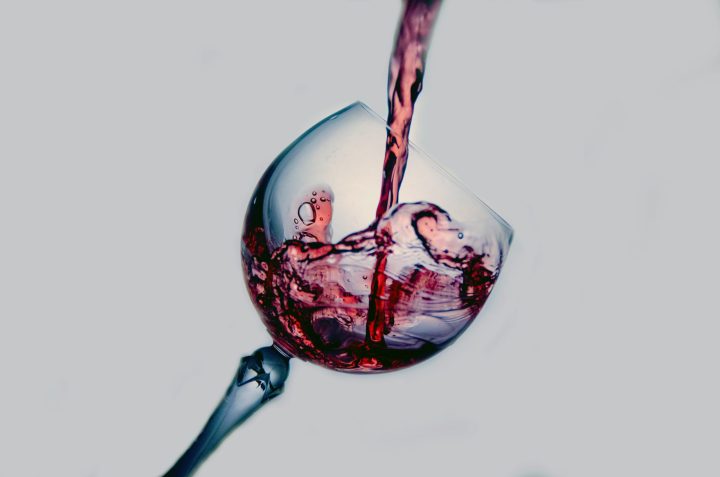A LIFE WELL LIVED
How to drink wine like a connoisseur

The world of wine can be an intimidating place where jargon abounds, flavours spark and aromas explode. Here is a short guide and glossary on what you need to know before you go wine tasting.
The sommelier comes to the table and pours a little rich, red liquid into your glass – do you smell it? Do you swirl it? Do you drink it? And if you smell it, what scents should you expect? If you taste it, what aromas should you recognise?
Placing the order
Whether you’re hosting a dinner party, going wine tasting or eating at a restaurant, you might have to buy or order wine – and if you’re the host, you’ll probably be the designated order-placer. What do you look for? Local. In 2019, South Africa ranked “eighth in overall volume production of wine and produces 3.3% of the world’s wine”. Choices are plenty and there’s a good chance you will find at least a few of the following wines on the menu: for red wines, Merlot, Pinotage and Shiraz; for white wines, Chardonnay, Sauvignon Blanc and Chenin Blanc.
In addition, there are rosé, sparkling and dessert wines, although these are usually more suited for special events and sundowners. Sidenote: a dessert wine is, perhaps not surprisingly, for dessert.
Pairing with food
You should be able to eat pretty much whatever you want while drinking whichever wine you want: however, thinking about what you’ll be eating before you order wine is a must. As with everything, not all flavours and aromas are great when mixed together, and you (and your tastebuds) might be surprised by unusual pairings.
Food and wine pairings are a science by themselves: generally, you should order red wine with red meat and white wine with white meat, while vegetarian dishes are most commonly paired with white wines. This said, there is no golden rule and you might want to be playful and try to see what wine brings out the most flavours.
In more complicated terms, each wine also has specific meals they work well with. Chardonnay and seafood generally work well together; Cabernet Sauvignon paired with red meat, steak specifically, is the sort of match that seems to bring the best of both sides; a South African wine, Pinotage is well-suited to local meals such as braais and potjiekos; Merlot matches with lighter meats such as duck and lean beef; Sauvignon Blanc works well with salads and sushi; and Chenin Blanc and chicken make for a great pair, the former wrapping chicken with its sweetness.
Should you be unsure, go for a red or a white blend, as they usually work well with any meal.
Check also The Food and Wine Pairing Guide by Katinka Van Niekerk and Brian Burke; it will tell you which wine to pair with almost any meal. Their advice? Experiment with what type of wines you like and order the ones you enjoy.
Once you’ve decided which wine to order, you can start looking at other factors. The price of a bottle, as well as the year when the wine was produced, can give you clues on the kind of wine you’ll be drinking – although an expensive wine doesn’t always mean it’s good. As for the year of production, white wines are preferably drunk at a young age, while red wines are drunk when they have aged.
Tasting the wine
At some fine dining restaurants, the waiter will provide a taster of wine. There is a common misconception that this has to do with whether you enjoy the wine, but this is not the case. It is simply to test whether the wine has gone bad or not.
There are three steps involved in the tasting of the wine: looking, smelling and tasting. One looks at the wine to see if the wine has become unclear or discoloured; don’t worry if looking at the liquid in your glass doesn’t give you a clue about whether it has gone bad or not – only the trained eye is able to do so.
Smelling wine might give you a better idea of how it will taste: can you pick up traces reminiscent of polish remover? Is your nose tickling at the bitter whiff of vinegar? It might be that the wine is no longer good.
If your nose only picks up the wine’s natural aromas, then take a sip – if nothing is wrong, go ahead and pour yourself, and the others, a glass.
Wine tasting at wine farms is slightly different from restaurant tastings: here, you’re not tasting to pair with your food but rather to explore and discover new wines. Yet, the three-step process is the same.
Before you smell the wine, you can swirl the glass to release some of the flavours. The best bet for a beginner is to keep the glass on the table and move it around, clutching the stem between your fingers, with your palm on the base, to avoid any spillage.
Sommeliers organising wine tasting will be able to tell you what you’re likely to smell, but don’t hesitate to ask them as well; it’s a great way to build references and use their advice as a guideline. Make your own notes about what you smell, even if it differs – we all enjoy different and unique scents when cooking, and wine is no different.
Tasting the wine is where you will discover your preferences the best. Try to compare the flavours to what you tasted before; do you enjoy the taste and what food would you like to eat it with? Does it leave an aftertaste or does it wrap your pallet with flavours?
In the end, there is but one rule – enjoy! DM/ML

















 Become an Insider
Become an Insider
Comments - Please login in order to comment.